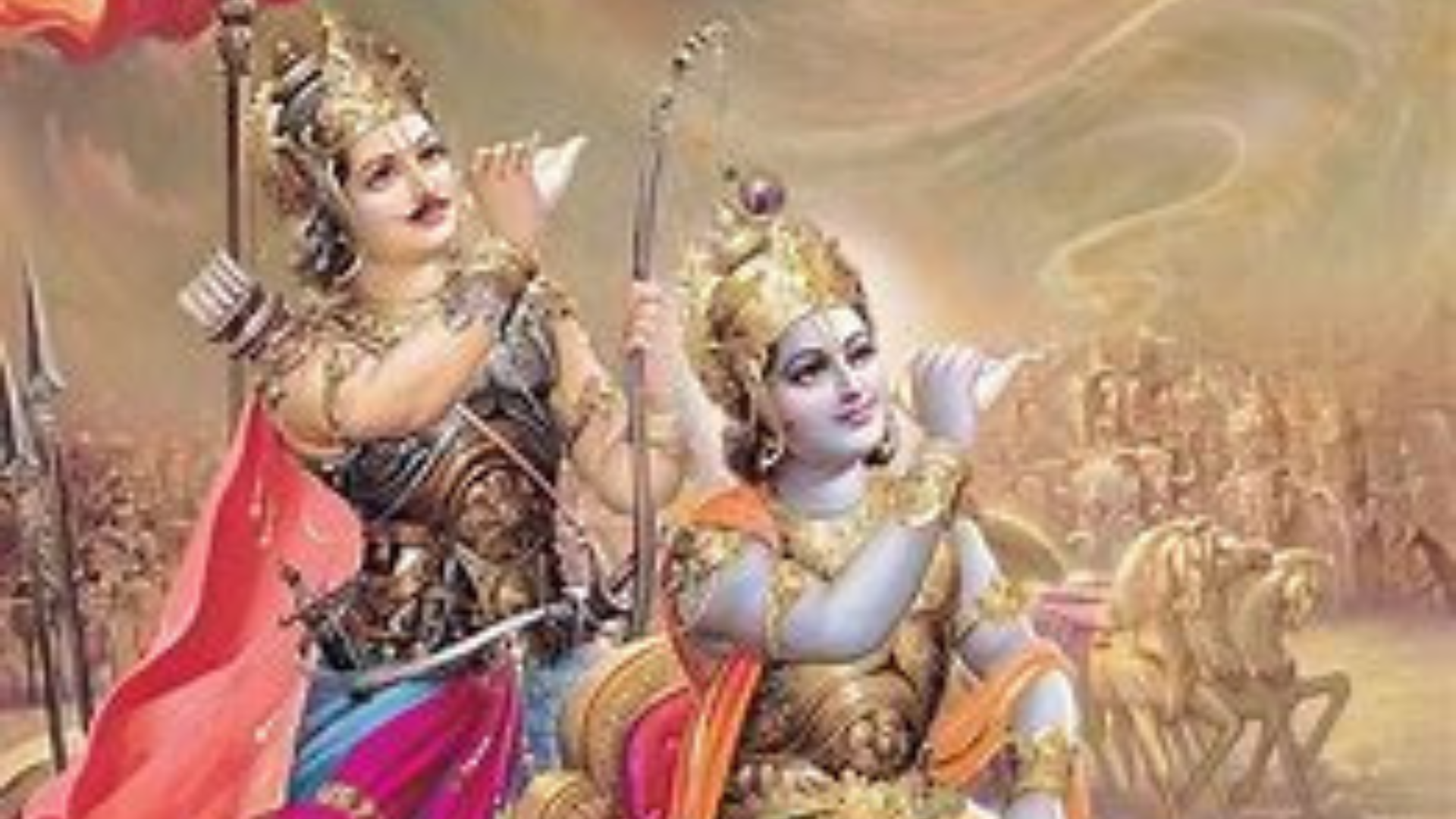P.V.Laxmiprasad is the author of this critical book on the philosophy of Bhagavadgita. This book is divided into chapters like Indian philosophy, Philosophy of Bhagavadgita and the conclusion befittingly a magnum opus on the core content. The author has touched the basic concepts of Indian Philosophy, branches of Philosophy, different schools of philosophy. He refers to the influences of Gita on Western scholars like Emerson. Interestingly he connects the link between the Bhagavadgita and Yoga, Law of Thermo Dynamics. He then presents the quotes on Bhagavadgita from different sources, in particular the quotes on Karma, Love, and Life.
The Bhagavad Gita occupies a unique position in the spiritual literature of the world, as it is one of the most revered scriptures, while at the same time being an outstanding poetical expression, a philosophical masterwork, a visionary experience and a profound psychological text outlining key concepts in the practice of yoga as a methodology for the development of consciousness. One of the things that make the Bhagavad Gita unique is the setting. It is a teaching provided on a battlefield, at a time where the evolutionary progress of humanity was meeting substantial opposition and hostility. The questions that arise within this context are universal questions that every human being eventually has to face, questions of life and death, morality and religious faith, and questions of relationships, honor, and justice and of war and peace.
Laxmiprasad traces out the philosophy In a brilliant Sloka that captures the readers from the perspective of Philosophy, Lord Krishna renders it as: ―yatha dipo nivata stho nengate sopama smrta / yogino yata cittasya yunjato yogam atmanah‖ (287). This Sloka shows the way out for the devotees in general. Just as a lamp in a windless place does not waver, so the transcendentalist, whose mind is controlled, remains always steady in his meditation on the transcendent Self. It is undisturbed mediation on his Lord. To a devotee, the Lord is as steady as a lamp in a windless place. He should remain unmoved. He maintains a steady position. The material body longs for the demands of the body. But a man who enjoys Bhakti- Yoga does not arouse the senses while meeting the demands of the body. Bare necessities can be acceptable in material life. Self-control is emphasized. Lord Krishna asks Arjuna to become a Yogi. ―Tapasvibhyo dhiko yogi/ jnanabhyo pi mato dhikah/ karmighyas cadhiko yogi tasmad yogi bhavarjuna‖ (312). There are three types of Yoga according to which they are classified 1) Karma- yoga 2) Jnana -yoga 3) Bhakti- yoga. Yoga is lining our consciousness with the Supreme Absolute Truth. When the linking process is predominantly in fruitive activities it is called Karma-yoga, when it is predominantly empirical it is called Jnana-yoga, and when it is predominantly in a devotional relationship with the Supreme Lord it is called Bhakti-yogi. To quote Bhaktavedanta Swami, ―the culmination of all kinds of yoga practices lies in the Bhakti- yoga. From the beginning of Karma –yoga to the end of bhakti-yoga is a long way to self-realization. Karma-yoga is the beginning of this path. When Karma –yoga increases in knowledge and renunciation, the stage is called Jnana- yoga. When Jnana –yoga increases in meditation on the supersoul by different physical processes, and the mind on Him, it is called astanga –yoga. When one surpasses the Astanga –yoga, and comes to the point of the supreme personality of God, it is called Bhakti-yoga, the culmination‖ (315). Again, Yogis are called by the service they render like – Karma-yogi, jnana yogi, dhyana –yogi, raja –yogi, hatha –yogi. Laxmiprasad quotes those Slokas which befittingly deal with the philosophy. He has covered many Slokas in the book. The interpretation is scholarly and knowledgeable.
The Bhagavad-Gita is universally renowned as India‘s spiritual wisdom. Having spoken by Lord Krishna, the Supreme Personality of Godhead, to His intimate devotee Arjuna, the Gita‘s verses provide a definitive guide to the science of self-realization. It is such an important scripture that it can help us to get out of the cycle of birth and death. Anyone who recites Bhagavad-Gita with devotion will go to the spiritual world at the time of death. The Bhagavad- Gita is so powerful that even by repeating half a Sloka, one can go to the spiritual world. Indeed, no work of such immensity and potentiality compares in its revelations of man‘s essential nature, his environment and ultimately, his relationship with God. To this end, this critically evaluated book serves the needs of readers from the perspective of an easy understanding. Philosophical explorations make it doubly enriching and enlightening. Translations too explored Gita in different interpretations though the spirit is maintained throughout the textual analysis. Any field of operation is the chariot, and in every such field there should be this cooperation between the individual and the universal. In every bit of the relative or the particular, the universal is imminent, and the recognition of this universality in every particularity is the wisdom of life. The philosophy of Bhagavadgita is revelatory and revolutionary, universal and eternal, and potential and influential.























